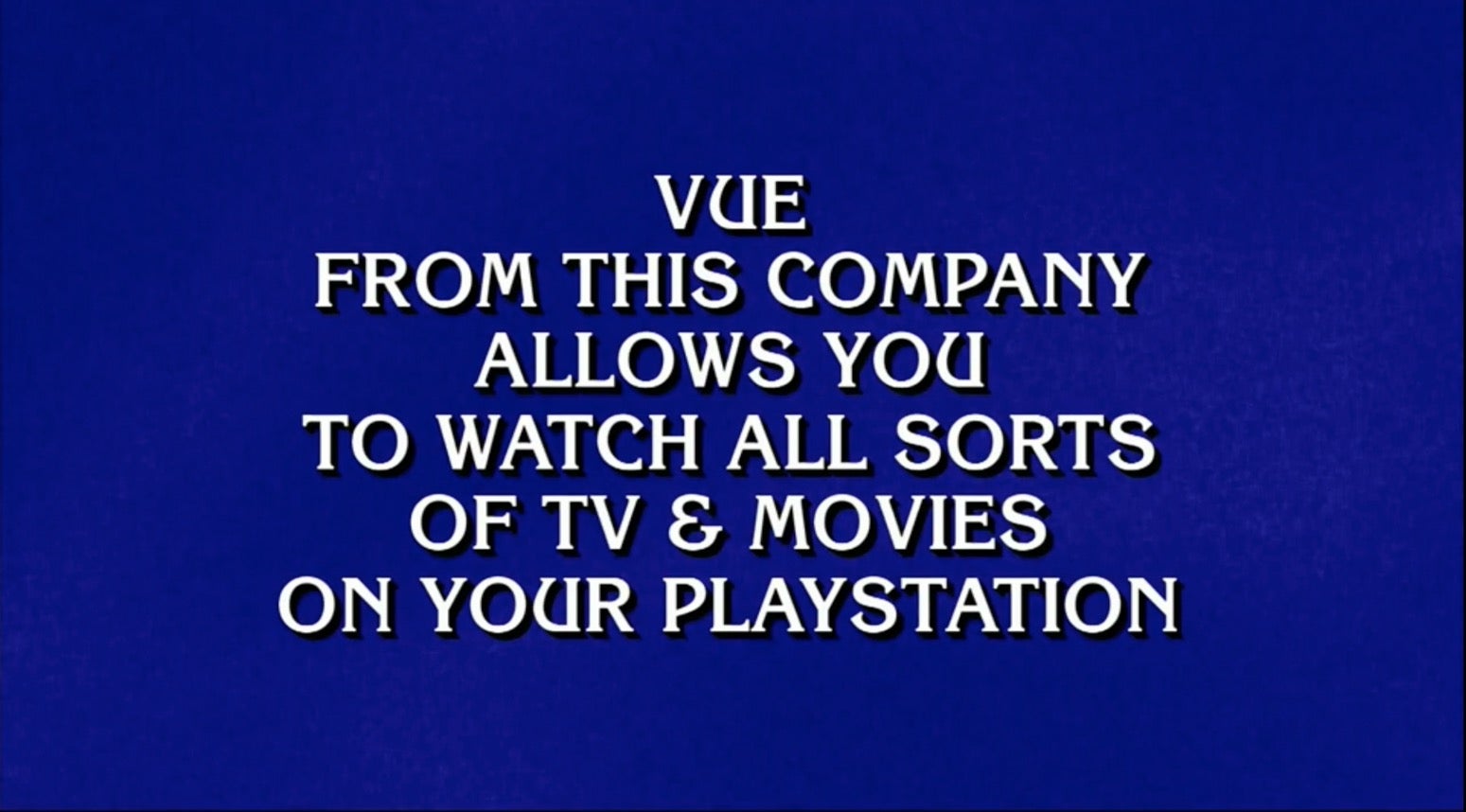
“Vue from this company allows you to watch all sorts of TV & movies on your PlayStation.” One of the contestants on the Nov. 7 airing of “Jeopardy!” correctly buzzed in with the answer: “What is Sony?” The show, which was bought by Sony in 2006, couldn’t even correctly convey that PlayStation Vue could be used on more than a PlayStation device.
It didn’t matter, it was already too late. Just a week earlier, Sony had made the announcement that they were shutting down PlayStation Vue, the much loved (but not loved enough) Live TV Streaming Service on Jan. 30.
In their shutdown notice, John Kodera, deputy president of Sony Interactive Entertainment, said that because of the expensive content costs of the “highly competitive Pay TV industry,” the company would focus on their “core gaming business.”
As we since learned, in the months leading up to the shutdown, PlayStation Vue was seeing some of their highest growth ever. The company tried to sell the business, hiring investment bank, Bank of America Merrill Lynch, but that was unsuccessful, seeing little interest — except access to their user base.
We’ve heard from multiple sources familiar with their process that following the shutdown announcement, there was more interest than ever, mostly from private equity firms. But ultimately, the only deal they were able to make was a marketing partnership with YouTube TV, which would pay them to promote the service to their customers and release an app for PlayStation devices.
So despite the fact that they had probably the most compelling channel line-up for sports fans, that no existing service has come to match, an audience of 100 million PS4 devices to market to and a product with innovative features like multi-screen support, why weren’t they able to grow like other Live TV Streaming Services?
Most point to the name — PlayStation Vue. Just like on Jeopardy, most people didn’t know that you could use it on devices other than PlayStation. Originally that was intentional. At the Consumer Electronics Show (CES) in 2014, Sony Computer Entertainment CEO Andrew House announced a new “virtual cable TV” product that would be targeted at PS3 and PS4 customers later that year.
By September, the company had signed Viacom, but by November, they had added NBCU, Discovery, Scripps and 21st Century Fox. The platform would include both live streaming and on-demand content, which ultimately would launch in March 2015 in select markets.
It wasn’t until November, nearly 20 months after the initial announcement, that the company would soon realize the mistake they made with the PlayStation Vue name. At that time, they wisely decided to roll out the service to Fire TV devices, followed by Google Chromecast, and then Apple TV the following year.
By 2016, the company had built the first true virtual cable bundle, added local channels, regional sports networks and Disney-owned networks, and a $10 price drop to just $39.99. In March, the company launched nationally with a slimmed down plan starting at $29.99 in markets where they didn’t carry local channels.
But unlike Sling TV, which offered skinny bundles with limited channels, PlayStation Vue thought the way to success was a traditional cable company tiered approach, but with a built-in audience of PlayStation users, a lower cost of acquisition and the ability for more targeted advertising.
While Sling TV rapidly gained a following with its $20 price point, PlayStation Vue never really took off. While the platform was now available to almost anyone, and anywhere — most people thought it could only be used on PlayStation consoles.
Then came the copy-cats. In November 2016, DIRECTV NOW launched with a big promise. While it didn’t have a DVR, it included more channels than anyone else for just $35 a month. To grow subscribers, they gave away Apple TV 4K devices (worth $170) by pre-paying for 4 months of service.
While PlayStation Vue had a superior product and a quality bundle, it was no match to the marketing budget that AT&T was putting behind DIRECTV NOW. In 2017, the market just became even noisier. In April 2017, YouTube TV began streaming, then in May, Hulu would debut Hulu Live TV.
With major companies, which their own built-in subscriber base to market to, it wasn’t just a two-horse race as it was initially with Sling TV and PlayStation Vue. And while everyone knew other services could be used on any platform, people still thought that PlayStation Vue could only be used on PlayStation devices.
The company tried to change that. There were internal talks about changing the name to Sony Vue, but using the Sony name came with a lot baggage. By using the Sony name, all marketing would have to funnel through their Japan HQ, which would have slowed down growth efforts even further. Instead, the company began deemphasizing PlayStation, started referring to the service as PS Vue, even running ads saying that you don’t need a PlayStation.
But, instead of spending money getting users to sign-up for the service, now they were spending money just informing users they could even use it.
That wasn’t the only thing that prevented growth. When signing up for the service, new users had to create a Sony ID. This meant that every sign-up for Vue took three times the number of steps than any of the other Live TV Streaming Services, which meant for every dollar the company spent on marketing, there were fewer coming through the funnel.
Like the other services, they saw annual price increases every July. From $40 (2017) to $45 (2018) to $50 (2019). They faced their fair share of contract disputes with Sinclair and NESN, and even lost Viacom channels one of their initial launch partners.
But what ultimately did them in was what the entire cable industry is facing: rising content costs, which means higher-priced plans, which means fewer customers interested in your service — choosing a cheaper SVOD service like Netflix or Hulu instead. The only way to make a virtual cable bundle profitable in this day and age is to break even on content costs and to make it up on targeted advertising which they can sell against programming. But with that, you need scale, and PS Vue reportedly never saw more than 500-700K subscribers.
From what we understand, PlayStation Vue didn’t think they were that far away. But time ran out. By being mixed in with widely profitable PS4, their losses to date were masked. But, with the PS5 launching next year, with an uncertain success, high marketing costs, Sony Interactive Entertainment just couldn’t continue to bear the losses.
So here we are today, without what was probably the biggest innovator of them all. They were the first to introduce the unlimited cloud DVR, multiple simultaneous streams, a la carte premium subscriptions, and multi-screen which allow you to watch four shows at once.
Regardless whether you switch to Hulu Live TV, fuboTV, YouTube TV, or give up a streaming cable bundle altogether — remember while PlayStation Vue may be the first to go, it’s hard to imagine that the options we do have would exist without them.
